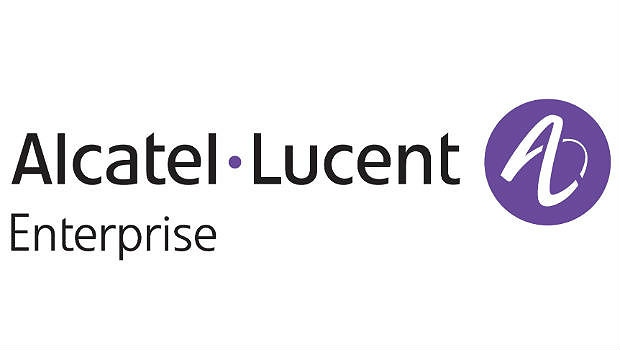ALE, operating under the Alcatel-Lucent Enterprise brand, previously was a division of Alcatel-Lucent, which has been acquired by Nokia.

 ALE (Alcatel-Lucent Enterprise), has been forging its own path and plotting new strategy since splitting from Alcatel-Lucent in fall 2014.
ALE (Alcatel-Lucent Enterprise), has been forging its own path and plotting new strategy since splitting from Alcatel-Lucent in fall 2014.
ALE, which was purchased by investor China Huaxin, is a global enterprise communications, networking and cloud company with legal entities in more than 60 countries and customers in nearly 100. Its global headquarters is just outside Paris and its North American headquarters is in Calabasas, California.
 Nokia recently completed is acquisition of Alcatel-Lucent, a global telecommunications company.
Nokia recently completed is acquisition of Alcatel-Lucent, a global telecommunications company.
ALE has launched a new business strategy with a focus on industry-specific sales, cloud and services. It includes four new regional sales organizations aimed at better serving its partners, customers and their markets. In addition, its redesigned channel program offers specializations, training and increased revenue possibilities.
The company also is delivering services spanning from customer premises equipment (CPE)-based networking and communications technologies, to advanced, on-demand consumption-based cloud offerings with the Alcatel-Lucent Rainbow, OpenTouch Enterprise Cloud and Network On Demand.
In a Q&A with Channel Partners, Charles Matthews, who is heading up North America for ALE, talked about his company’s ambitious goals for continuing growth, including expansion across the southern and western United States.{ad}
Channel Partners: What prompted the need for the new business strategy?
Charles Matthews: Alcatel-Lucent/Nokia primarily focuses on the service provider/carrier market; that’s where their DNA is and where a lot of their investment is going. We broke away because we wanted and sought a shareholder that would be willing to invest much more in the enterprise space, which is strongly interested in cloud and in as-a-service type of services. The only way we could do that is to have an ambition as an enterprise company, and that was one of the big drivers to splitting off and aligning with a shareholder who wanted to go much bigger in the enterprise space.
CP: How were partners impacted by the split from Alcatel-Lucent?
CM: The vast majority of our partners just stayed with ALE because they had very much an enterprise focus. So most of our partners are serving university campuses, K-12 schools, hospitals, these kinds of companies, which are classified as enterprise. And we have some of the larger partners like AT&T, [which] is still incredibly important to Nokia today, but we do business with them, too, directly with our own line of products that they will put into their …
{vpipagebreak}
… networks. So we have a lot of them who are just doing business with us and not so much with Nokia, but some of these larger ones with large customers — we are both doing business with them today, so it’s a coexistence. And even Alcatel-Lucent Nokia is actually a partner of ours today, so we will sell through them to touch some of those carriers or larger enterprise customers where they have a larger presence than we do.
CP: How is the partner program changing? How is it better assisting partners?
CM: The big watchword for us is simplification of our partner program and that’s what we’ve been doing since we’ve split off. We call this “initiative value” for the partner, and the idea is just to make it easier to do business with us. So we simplified some of the training and certification requirements for partners, narrowed it down in a few cases so it’s not as onerous and easier to onramp for them. And in some cases we have an appetite to do joint development with some of our partners if they have an appetite to jointly develop a product and go to market together.
We have three different types of partners. One is a direct reseller – these are partners that we directly align with – we’ll have a partner contract and they will sell to their end customer. We’re connecting directly with them, we might do some marketing initiatives directly with them … and these tend to be our higher revenue-producing partners; they’ve made investments in training, etc. The second one is a value added distributor who would take care of some of our indirect resellers; and the indirect reseller is the third one. Our indirect resellers would purchase through our value-added distributors, and these indirect resellers tend to be smaller — maybe they’re just coming on board and they can take advantage of the economies of scale provided by our distribution network.
CP: What sort of feedback have you received from partners regarding the new business strategy? Did feedback play a role in its formulation?
CM: The changes that we’ve made this year are pretty new. We just announced it to partners within the last few weeks, so we don’t have all the feedback … we’re expecting to have more when we do our partner event at the beginning of February. But I have spent some time with the partners and they appreciate any kind of simplification that we’re doing. We’ve done some more direct-investment approaches for certain product lines and the feedback on that has been very strong. We’ve done some incentives based on a revenue commitment by a partner. We’ll invest marketing, we’ll invest training, we’ll do sales blitzes together, and the response from that has been very positive this year, mostly around our networking portfolio of products.
CP: Can you talk about new opportunities created by new offerings such as Rainbow?
CM: OpenTouch cloud … requires a bit of an investment on the part of the partner where they’ll have to stand up their own data center, they’ll get some training and they’re really hosting the cloud, so the cloud exists in their …
{vpipagebreak}
… premises. This requires a fair amount of ambition, a good business plan, and direct investment in not just our product, but also to stand up that data center. The difference with Rainbow is … we’re hosting all of the infrastructure on our own, so the partner … they can become more of an agent and they sell the Rainbow and collect a fee on top of it. They can also build their own services on top of Rainbow if they wanted to do some kind of a break-fix service where they would be swapping phones in and out, etc. Or they could line it up with their own communications platform as-a-service offering on top of Rainbow. Rainbow is really that direct result of partners telling us, “We want you to take more of the risk on the technology, we don’t want to invest ourselves, and we’ll buy it through you.”
CP: What are the biggest challenges facing your company and what role do partners play in meeting those challenges?
 CM: We certainly don’t have the size of some of our competitors like Cisco or HP, or some of the others out there, so it’s really key for us to have good partners who can give us that scale. But we really see the partners as an extension of our sales and marketing efforts, as well as our service efforts, so they really become our arms into the market from a scale point of view with sales, marketing and services.
CM: We certainly don’t have the size of some of our competitors like Cisco or HP, or some of the others out there, so it’s really key for us to have good partners who can give us that scale. But we really see the partners as an extension of our sales and marketing efforts, as well as our service efforts, so they really become our arms into the market from a scale point of view with sales, marketing and services.
CP: What will your business/channel strategy look like in three to five years?
CM: One of the investments we made is having a leader for our (North American) channel strategy on board. Lisa Simpson just joined about three weeks ago. That’s one step we’re making in our investment in our channel strategy. Previously, I would say we were operating a bit more like in startup mode where we had channel management in each of the regions in North America split between east, west, south, north and Canada, and now we’re putting together a comprehensive channel strategy that Lisa is taking the lead on.
We’re looking to grow the existing partners and then recruit new partners in areas where we see the most need for growth, and this is in the western states and the southern states primarily. And then also from a vertical point of view, we’re doing quite well in the education space, and the state and local government space — we’ve got strong partners there, but we’re looking for partners on the vertical side for hospitality, as well as transportation. That’s where I think we will see where we fill those gaps in the next three to five years from the vertical and geographical perspective.
Read more about:
AgentsAbout the Author(s)
You May Also Like


